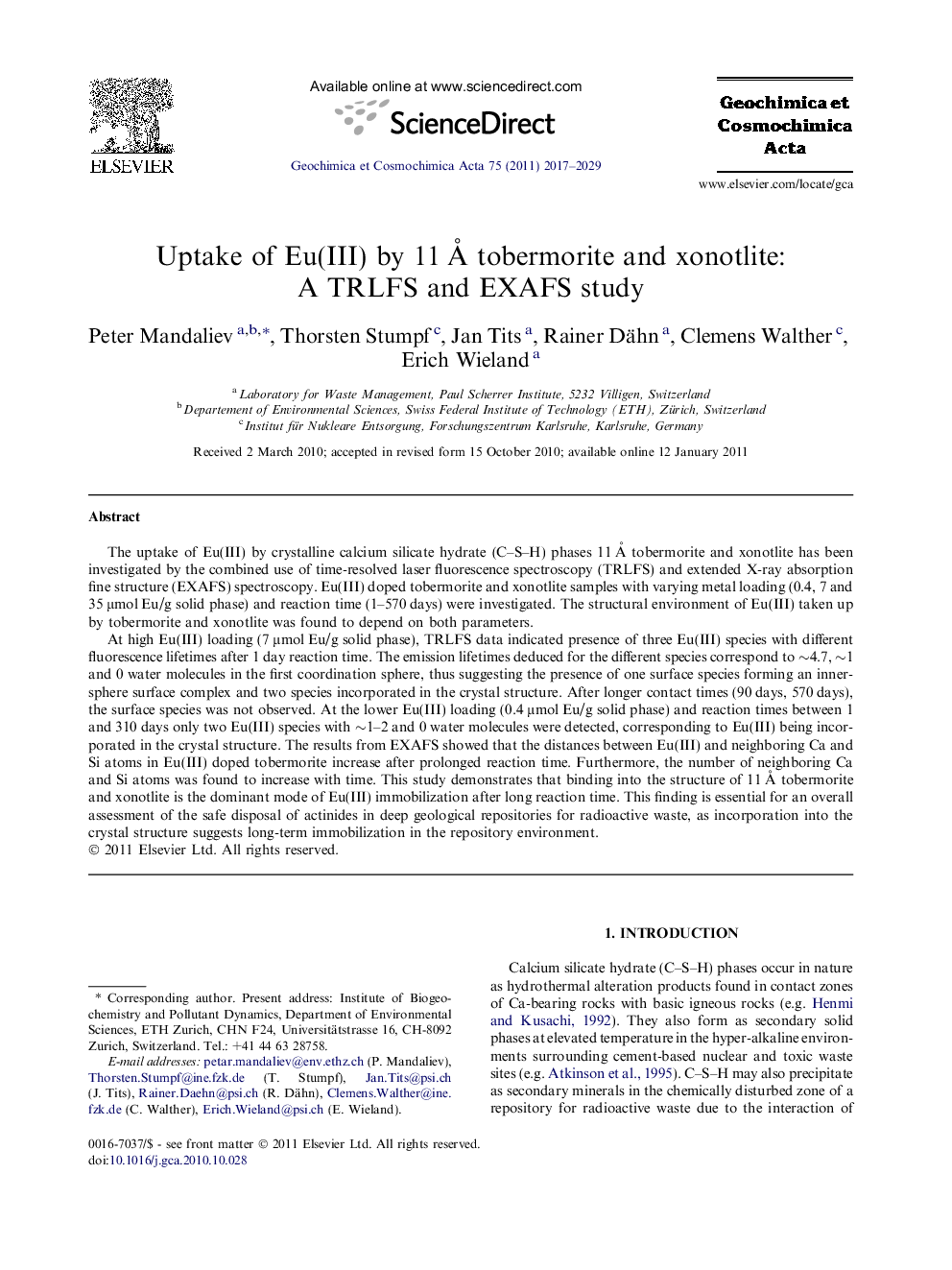| کد مقاله | کد نشریه | سال انتشار | مقاله انگلیسی | نسخه تمام متن |
|---|---|---|---|---|
| 4703420 | 1352864 | 2017 | 13 صفحه PDF | دانلود رایگان |
The uptake of Eu(III) by crystalline calcium silicate hydrate (C–S–H) phases 11 Å tobermorite and xonotlite has been investigated by the combined use of time-resolved laser fluorescence spectroscopy (TRLFS) and extended X-ray absorption fine structure (EXAFS) spectroscopy. Eu(III) doped tobermorite and xonotlite samples with varying metal loading (0.4, 7 and 35 μmol Eu/g solid phase) and reaction time (1–570 days) were investigated. The structural environment of Eu(III) taken up by tobermorite and xonotlite was found to depend on both parameters.At high Eu(III) loading (7 μmol Eu/g solid phase), TRLFS data indicated presence of three Eu(III) species with different fluorescence lifetimes after 1 day reaction time. The emission lifetimes deduced for the different species correspond to ∼4.7, ∼1 and 0 water molecules in the first coordination sphere, thus suggesting the presence of one surface species forming an inner-sphere surface complex and two species incorporated in the crystal structure. After longer contact times (90 days, 570 days), the surface species was not observed. At the lower Eu(III) loading (0.4 μmol Eu/g solid phase) and reaction times between 1 and 310 days only two Eu(III) species with ∼1–2 and 0 water molecules were detected, corresponding to Eu(III) being incorporated in the crystal structure. The results from EXAFS showed that the distances between Eu(III) and neighboring Ca and Si atoms in Eu(III) doped tobermorite increase after prolonged reaction time. Furthermore, the number of neighboring Ca and Si atoms was found to increase with time. This study demonstrates that binding into the structure of 11 Å tobermorite and xonotlite is the dominant mode of Eu(III) immobilization after long reaction time. This finding is essential for an overall assessment of the safe disposal of actinides in deep geological repositories for radioactive waste, as incorporation into the crystal structure suggests long-term immobilization in the repository environment.
Journal: Geochimica et Cosmochimica Acta - Volume 75, Issue 8, 15 April 2011, Pages 2017–2029
